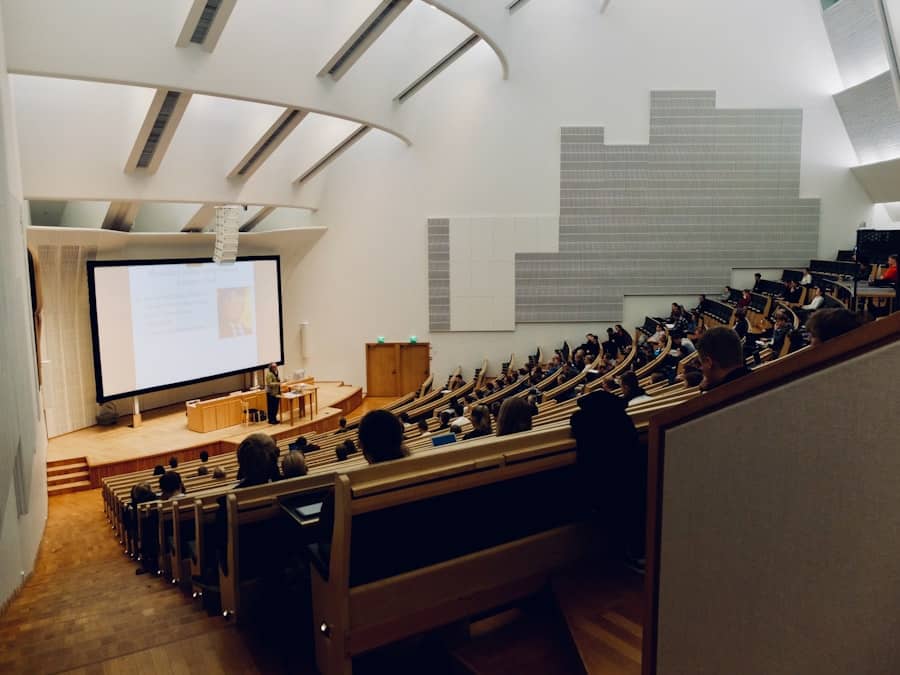The concept of the Metaverse has gained significant traction in recent years, emerging as a digital universe where users can interact with a computer-generated environment and other users in real-time. This immersive space is not merely a technological novelty; it represents a paradigm shift in how we communicate, learn, and engage with one another. As the Metaverse continues to evolve, it presents unique opportunities for various fields, including education, entertainment, and cultural preservation.
One of the most compelling applications of this digital frontier is in the realm of language preservation. With thousands of languages at risk of extinction, the Metaverse offers innovative solutions to safeguard linguistic diversity and promote cultural heritage. Language is a fundamental aspect of human identity and community.
It carries the history, traditions, and values of its speakers. However, globalization and technological advancements have led to the decline of many languages, particularly those spoken by indigenous and marginalized communities. The Metaverse, with its capacity for immersive experiences and global connectivity, can serve as a powerful tool for revitalizing endangered languages.
By creating engaging environments where language learning and cultural exchange can flourish, the Metaverse holds the potential to breathe new life into languages that are on the brink of disappearing.
Key Takeaways
- The Metaverse offers new opportunities for language preservation and revitalization.
- Virtual reality can play a crucial role in revitalizing endangered languages by creating immersive language learning experiences.
- Virtual language learning environments can provide a platform for connecting language speakers across the globe.
- The Metaverse can be used to preserve endangered languages through collaborative language documentation in virtual spaces.
- Augmented reality can also be utilized for language preservation, presenting both challenges and opportunities in the Metaverse.
The Role of Virtual Reality in Language Revitalization
Virtual reality (VR) is a cornerstone technology within the Metaverse that can significantly enhance language revitalization efforts. By immersing users in lifelike environments where they can practice speaking and listening in their target language, VR creates an engaging learning experience that traditional methods often lack. For instance, a user learning a Native American language could find themselves in a virtual representation of their ancestral lands, interacting with avatars that speak the language fluently.
This contextual learning not only aids in vocabulary acquisition but also deepens the learner’s connection to their cultural roots. Moreover, VR can simulate real-world scenarios where language skills are essential. Imagine a virtual marketplace where learners must negotiate prices or order food in their target language.
Such experiences can build confidence and fluency in a way that rote memorization cannot. Additionally, VR can facilitate immersive storytelling, allowing users to experience narratives in their target language while simultaneously engaging with cultural elements embedded within those stories. This multifaceted approach to language learning can significantly enhance retention and understanding, making it an invaluable asset in the fight against language extinction.
Creating Virtual Language Learning Environments
The creation of virtual language learning environments is crucial for effective language preservation initiatives. These environments can be designed to mimic real-life settings where the target language is spoken, providing learners with contextual cues that enhance comprehension. For example, a virtual classroom could be set up to resemble a traditional setting in which the target language is used daily.
This could include interactive elements such as virtual blackboards, cultural artifacts, and even native speakers acting as teachers or guides. Furthermore, these environments can be tailored to different proficiency levels, ensuring that learners from various backgrounds can engage meaningfully with the content. Advanced learners might participate in complex discussions about cultural nuances or current events, while beginners could focus on basic vocabulary and sentence structure through gamified experiences.
The flexibility of virtual environments allows for personalized learning paths that cater to individual needs, making language acquisition more accessible and enjoyable.
Connecting Language Speakers Across the Globe
One of the most transformative aspects of the Metaverse is its ability to connect individuals from diverse geographical locations. Language speakers who may be separated by vast distances can come together in virtual spaces to share their knowledge and experiences. This connectivity fosters a sense of community among speakers of endangered languages, allowing them to collaborate on preservation efforts and engage in cultural exchange.
For instance, a group of speakers from different regions who share a common language can meet in a virtual space to discuss their dialects, share stories, or even collaborate on projects aimed at documenting their language. This not only strengthens their linguistic ties but also promotes intergenerational dialogue, which is vital for passing down knowledge and traditions. By leveraging the global reach of the Metaverse, language speakers can create networks that transcend physical boundaries, ensuring that their languages remain vibrant and relevant.
Preserving Endangered Languages in the Metaverse
The preservation of endangered languages within the Metaverse involves more than just teaching vocabulary; it requires a holistic approach that encompasses cultural practices, storytelling traditions, and community engagement. Virtual spaces can serve as repositories for linguistic resources, where users can access audio recordings, written texts, and visual materials related to their target languages. These resources can be curated by community members or linguists who specialize in endangered languages.
Moreover, the Metaverse allows for dynamic content creation that reflects the evolving nature of language. Users can contribute their own stories, songs, and expressions in their native languages, creating a living archive that captures the essence of their linguistic heritage. This participatory approach not only empowers speakers but also encourages younger generations to take an active role in preserving their languages.
By fostering an environment where users feel ownership over their linguistic resources, the Metaverse can play a pivotal role in ensuring that endangered languages thrive.
Collaborative Language Documentation in Virtual Spaces
Collaborative language documentation is another critical aspect of language preservation that can be enhanced through virtual spaces. Linguists and community members can work together in real-time to document languages that are at risk of disappearing. This collaboration can take many forms, from recording oral histories to transcribing traditional songs or creating dictionaries that reflect contemporary usage.
Virtual platforms enable researchers to engage with native speakers directly, facilitating a more accurate and culturally sensitive documentation process. For example, linguists could host virtual workshops where community members share their knowledge about specific linguistic features or cultural practices associated with their language. This collaborative approach not only enriches the documentation process but also fosters a sense of pride among speakers as they see their contributions recognized and valued.
Using Augmented Reality for Language Preservation
Augmented reality (AR) is another innovative technology that can complement efforts in language preservation within the Metaverse.
This technology can be harnessed to create interactive experiences that promote language learning and cultural engagement.
For instance, AR applications could allow users to point their devices at objects in their environment to receive information about them in their target language. Imagine a user walking through a museum dedicated to indigenous cultures; by using an AR app, they could scan artifacts and receive descriptions or stories about them in their native tongue. This not only enhances language learning but also deepens users’ understanding of their cultural heritage by connecting linguistic elements with tangible artifacts.
Challenges and Opportunities for Language Preservation in the Metaverse
While the potential for language preservation within the Metaverse is immense, several challenges must be addressed to fully realize this vision. One significant hurdle is ensuring equitable access to technology among communities that speak endangered languages. Many indigenous groups may lack the necessary resources or infrastructure to participate fully in virtual environments.
Bridging this digital divide will require concerted efforts from governments, NGOs, and tech companies to provide access to devices and internet connectivity. Additionally, there is a need for culturally sensitive content creation that respects the nuances of each language and its associated culture. Developers must collaborate closely with native speakers to ensure that virtual experiences accurately reflect linguistic traditions and do not inadvertently perpetuate stereotypes or misrepresentations.
Despite these challenges, the opportunities presented by the Metaverse for language preservation are profound. By harnessing cutting-edge technologies like VR and AR, communities can create vibrant ecosystems where languages are not only taught but celebrated. The collaborative nature of these digital spaces fosters connections among speakers worldwide while empowering individuals to take ownership of their linguistic heritage.
As we navigate this new frontier, it is essential to remain committed to inclusivity and respect for cultural diversity, ensuring that every voice has a place in the Metaverse’s rich tapestry of languages.
A related article to “How the Metaverse Is Supporting Language Preservation Efforts” is “Discover the Best Free Software for Translation Today” which discusses the importance of translation software in bridging language barriers and preserving linguistic diversity. This article provides insights into the top free software options available for individuals and organizations looking to facilitate communication across different languages. To learn more about the best free software for translation, check out the article here.
FAQs
What is the metaverse?
The metaverse is a collective virtual shared space, created by the convergence of virtually enhanced physical reality and physically persistent virtual reality.
How is the metaverse supporting language preservation efforts?
The metaverse is supporting language preservation efforts by providing a platform for indigenous communities to create and share digital content in their native languages, thus preserving and promoting their linguistic and cultural heritage.
What are some examples of language preservation efforts in the metaverse?
Some examples of language preservation efforts in the metaverse include the creation of virtual museums, libraries, and educational resources in indigenous languages, as well as the development of language learning apps and virtual reality experiences.
How does the metaverse contribute to the revitalization of endangered languages?
The metaverse contributes to the revitalization of endangered languages by providing a global platform for indigenous communities to connect, collaborate, and share their languages and cultures with a wider audience, thus raising awareness and fostering appreciation for linguistic diversity.



